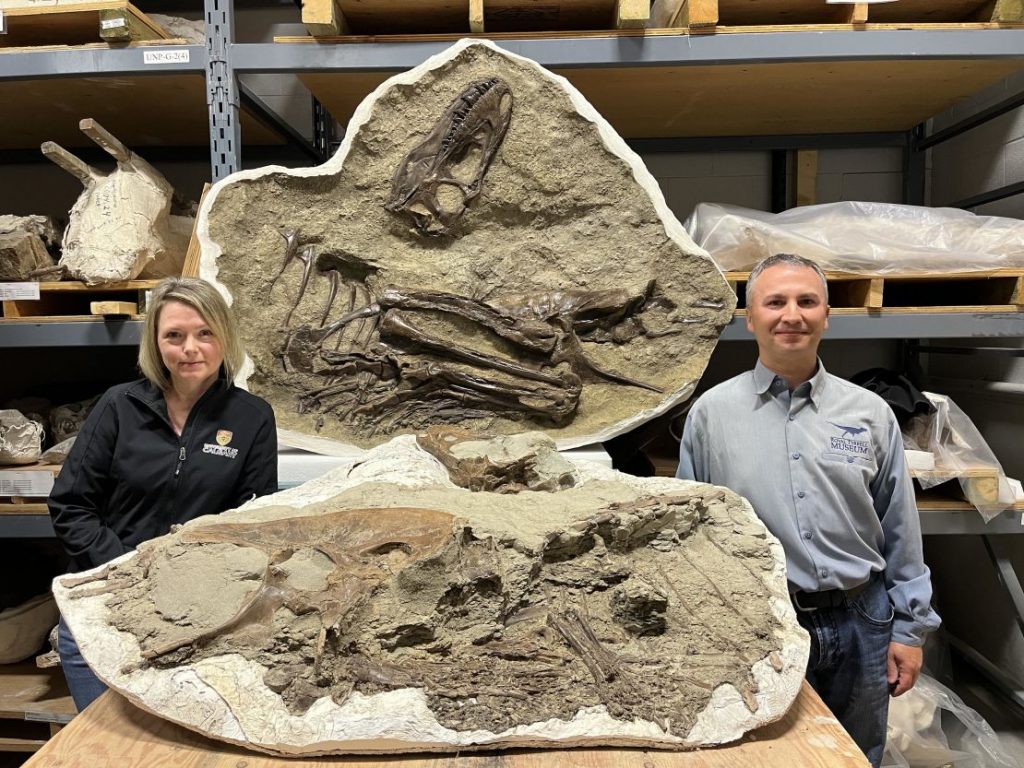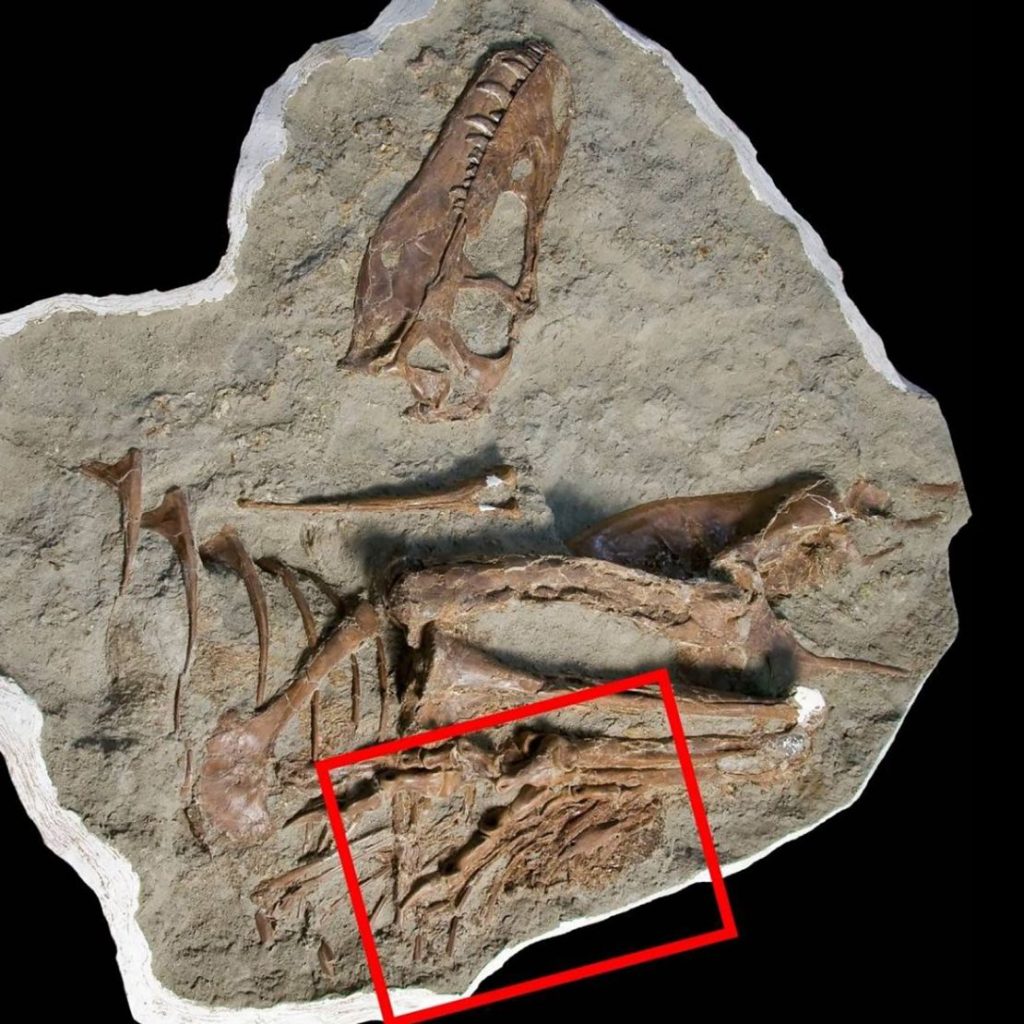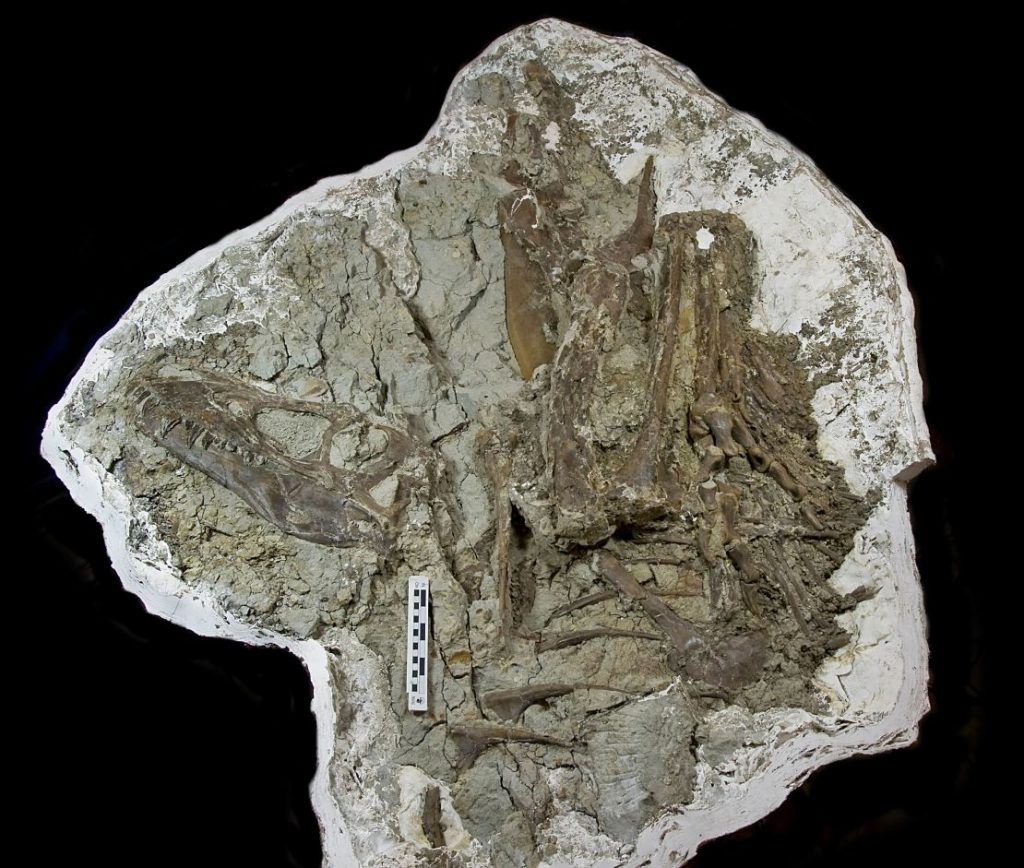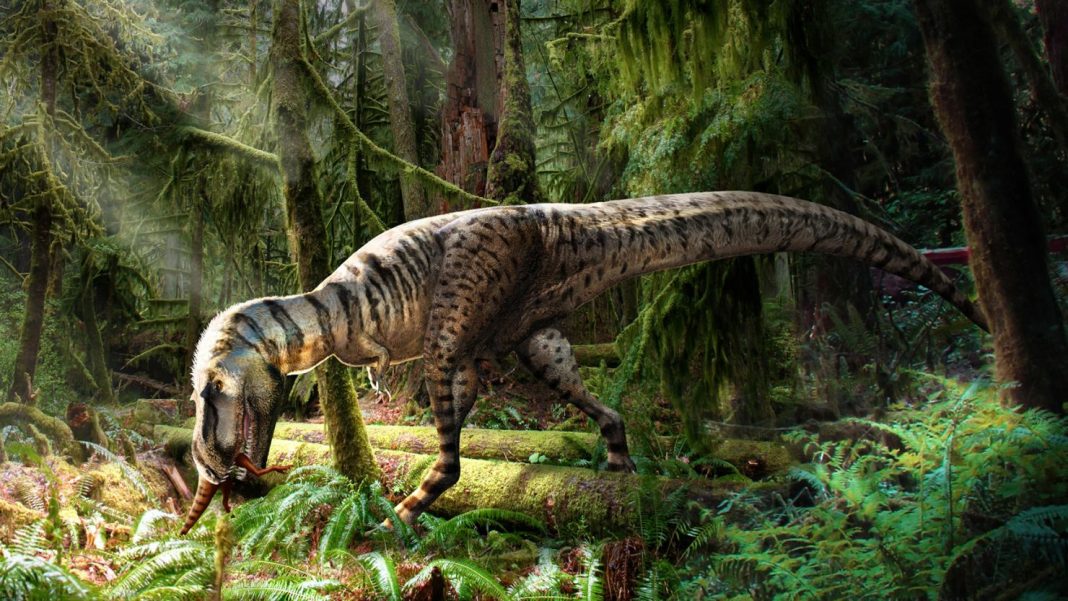Paleontologists have made a groundbreaking discovery: the perfectly preserved last meal of a tyrannosaur, providing an unprecedented glimpse into the diet and habits of these prehistoric predators.
About 75 million years ago, a young Gorgosaurus libratus, a cousin of the infamous T. rex, roamed the lands of what is now Alberta, Canada. Researchers have now revealed that its last meal was the hind legs of two baby dinosaurs from the species Citipes elegans. These findings, published in Science Advances, mark the first time the stomach contents of a tyrannosaur have been uncovered, shedding light on the dietary patterns of these colossal creatures.
The discovery was made in Alberta’s Dinosaur Provincial Park back in 2009. Initially, the significance of the tyrannosaur’s stomach contents was not apparent. However, while preparing the fossil at the Royal Tyrrell Museum in Drumheller, Alberta, researchers noticed small bones protruding and uncovered the remarkable find.

This young Gorgosaurus, weighing about 772 pounds and measuring 13 feet in length, showed a peculiar dietary choice. It seemed to exclusively consume the hind legs of its prey, leaving the rest of the carcass untouched. This finding contradicts the common belief that these massive predators were indiscriminate in their eating habits.
The significance of this discovery extends beyond the diet of a single dinosaur. It offers insights into the changing appetites and hunting strategies of tyrannosaurs as they aged. While adults, like T. rex, could crush bones with their powerful bites, younger ones like this Gorgosaurus likely hunted smaller, swifter prey due to their less robust build.

Kat Schroeder, a paleoecologist not involved in the research, emphasized the rarity and importance of such finds. The fossil not only confirms theories about the varied diets of juvenile tyrannosaurs but also contributes to a deeper understanding of their growth and development.

In summary, this discovery is a rare window into the life of a young Gorgosaurus and a testament to the complexity of dinosaur ecosystems. It illustrates the dynamic nature of these ancient creatures and continues to challenge our understanding of their lives millions of years ago.



































